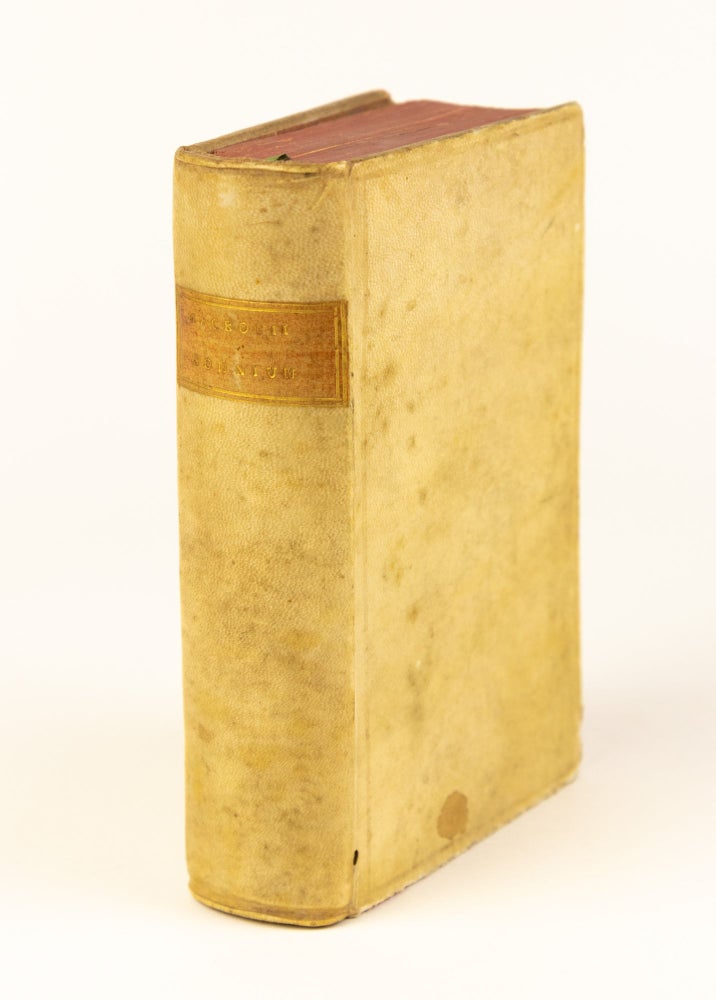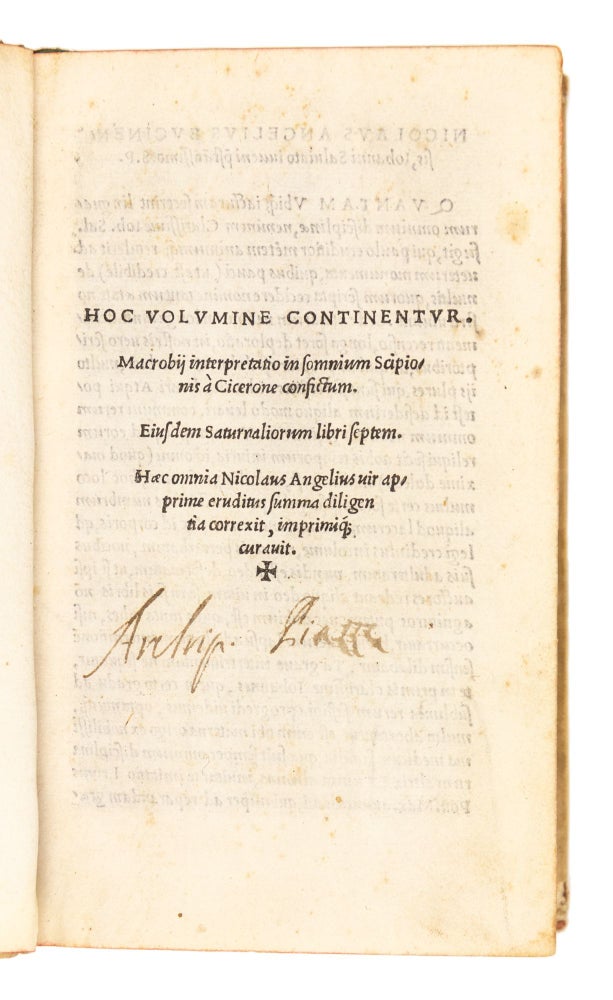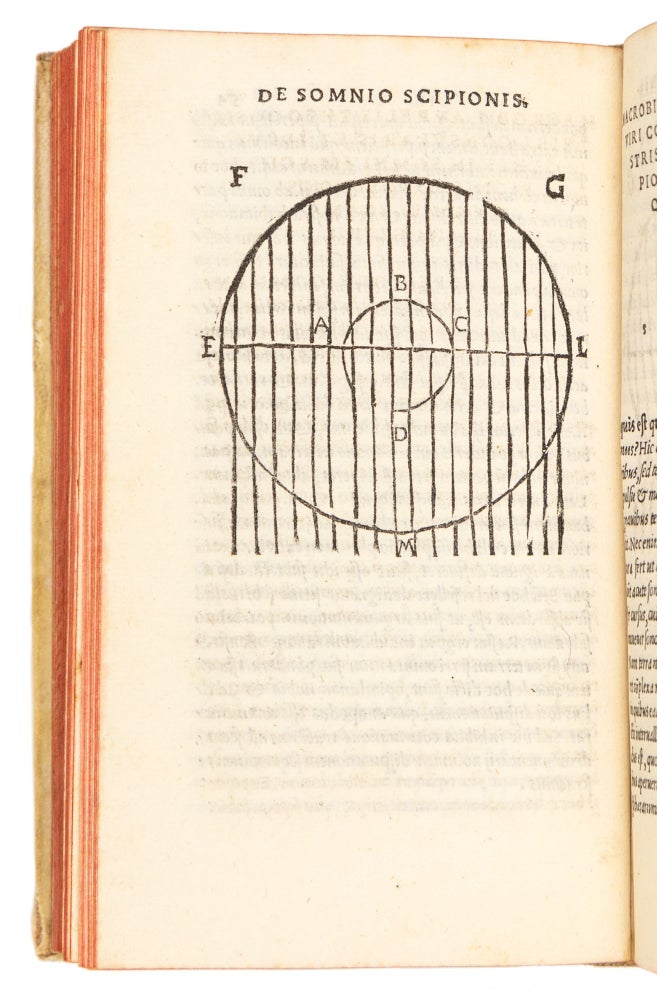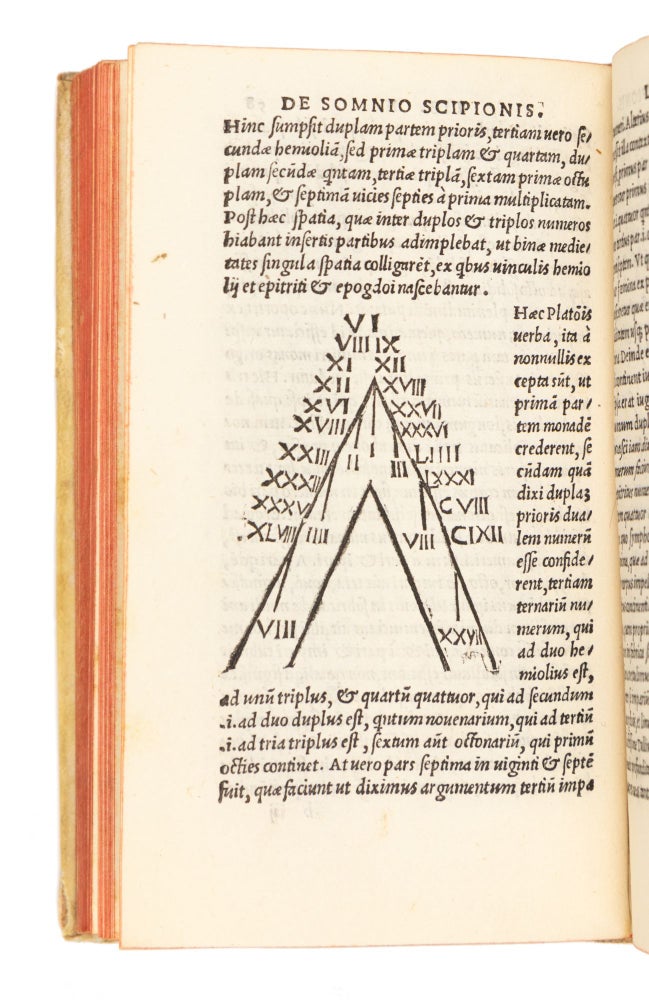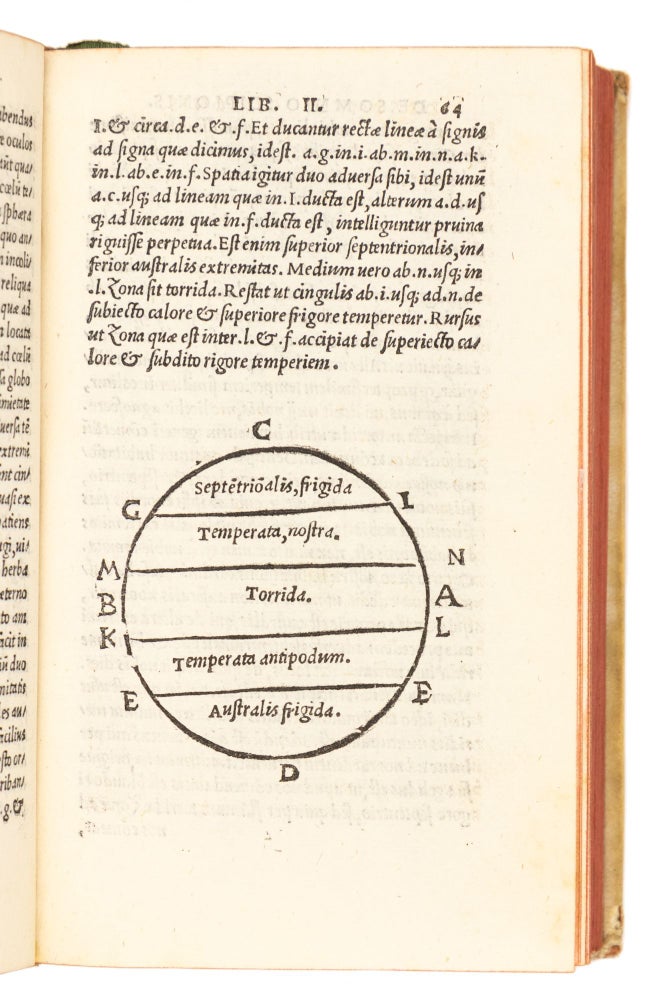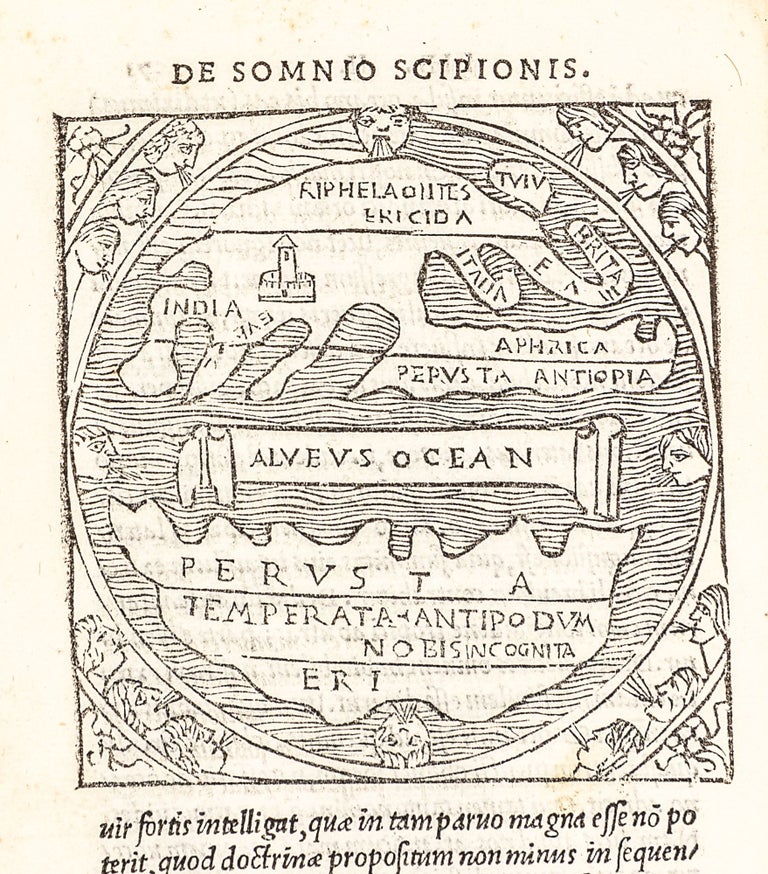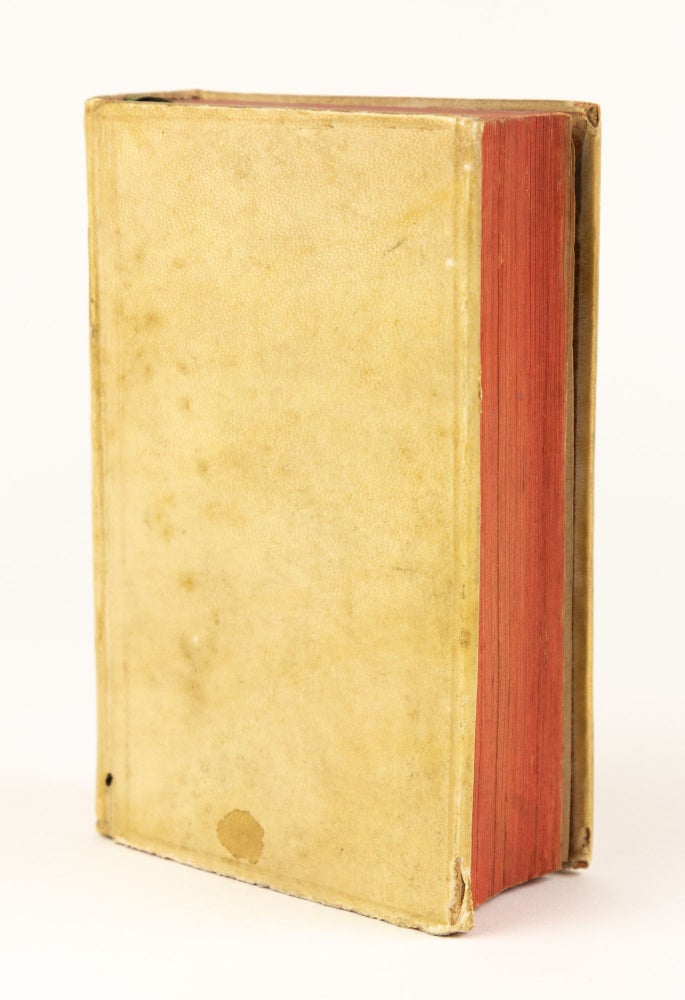Macrobii interpretatio in somnium Scipionis. Eiusdem Saturnaliorum Libri Septem
Florence: Giunta, 1515.
Price: $6,500.00
Octavo: 15.6 x 9.5 cm. [24], 279, [1] p. Collation: †12, a-z8, et, um8, rx8, A-I8
FIRST GIUNTA EDITION, Edited by Niccolò Angeli (b. 1448).
A very nice copy in 18th c. vellum with a single blind-ruled fillet and a citron morocco label, gilt; edges of text-block stained red. The text is in very good condition with scattered light foxing, heavier to a few leaves. A few minor stains, wax seal remnant on final leaf. Text in italic, with numerous passages in Greek. Illustrated with six geographical and astronomical diagrams, including maps of the world and the solar system, the world divided into five climate zones, with a section in the lower hemisphere labelled "nobis incognita", believed to be America. Final leaf with Giunta device (the Giunta lily supported by two putti holding cornucopias). Early ownership inscription on title.
Written in the late fourth or early fifth century, during the twilight years of Roman paganism, Macrobius' "Saturnalia" and "Commentary on the Dream of Scipio" are two of the last works produced in antiquity that present us with an intellectual and cultural vision that ignores Christianity altogether.
In the "Saturnalia" we have a Neoplatonic symposium, held by a group of highly cultured interlocutors dining together during the pagan festival of year's-end. The conversations are wide-ranging, with weighty discussions of religion, philosophy, and literature (above all the works of Vergil), balanced by jokes, talk of the pleasures of wine, the price of fish, the question of how far an insult can go and still be funny, and matters of digestion. The Saturnalia itself (its origins, the worship of Saturn, etc.) is also discussed, as are other pagan religious festivals.
The Neoplatonist Cosmos: Macrobius commentary on the Dream of Scipio:
The “Somnium Scipionis” (Scipio’s Dream) originally constituted Book VI of Cicero’s “De Republica”, a discourse now mostly lost. The “Dream” was preserved and circulated separately in late antiquity, thanks in large part to Macrobius, who wrote a cosmological commentary on the “Dream.”
Cicero cast his work in the form of a Platonic dialogue, in which the main interlocutors are Scipio Aemilianus (Scipio Africanus the Younger) and the ghosts of his father, Aemilianus Paullus, and grandfather, Scipio Africanus the Elder. The ghosts foretell the young Scipio’s future, instructing him to be just and dutiful toward his country as the surest way of achieving heaven. The ghosts then take the young Scipio to “a high place full of stars, shining and splendid" where they reveal to him the organization of the cosmos, emphasizing the contrast between earthly temporality and the eternity of the cosmos.
In expounding the workings and nature of the universe, Scipio’s grandfather, “tells him that there is life after death and introduces him to the ‘perfect’ numbers seven and eight (numbers whose meanings were attributed by contemporary Greek mathematicians to Pythagoras.) He goes on to show Scipio the nine spheres that make up the universe. Eight of them, he says, revolve at extremely high speeds, emitting seven tones that form an extraordinarily harmonious musical chord. This chord is inaudible to humans, but they nevertheless try to imitate it with the seven strings of the lyre and in song. This description is the earliest known of the harmony of the spheres.”(Joost-Gaugier, “Measuring Heaven”, p. 28)
"Possessed of a finely tuned sensibility for the signifying value of Cicero's dream-text, Macrobius exploited the text's cryptic images in order to display the philosophical erudition of the Neoplatonic tradition…
"According to Macrobius, an entire Neoplatonic encyclopedia lay encoded in Cicero's 'Dream'. Because Cicero hinted at 'profound truths… with amazing brevity, concealing his deep knowledge of things beneath a concise form of expression,' Macrobius took as his task the patient unfolding of the depths of knowledge lurking in these alluring hints. He proceeded systematically by following the topics introduced in the 'Dream' in the order of their appearance. For example, Cicero's mention of the dreamer Scipio's destined age ('seven times eight recurring circuits of the sun') leads Macrobius into a lengthy recitation of Pythagorean arithmetic; a brief description of the celestial sphere issues in a very detailed presentation of astronomical theory; and so on. Macrobius covers three of the four sciences in the quadrivium, mathematics, astronomy, and music, and partially covers the fourth (geography being a part of geometry), as well as giving a passionate and lengthy disquisition on Neoplatonic views of the origin, nature, and immortality of the soul."(Miller, "Dreams in Late Antiquity: Studies in the Imagination of a Culture", p. 98).
Giunti tipografi editori di Firenze, 1497-1570, no. 70; Renouard, Giunta, p. 39; Renouard, A.A. Annales de l'imprimerie des Alde, page XXXIX, no. 65; Bandini, A.M. De Florentina Iuntarum Typographia, part 2, page 85; Sander, M. Livre à figures italien depuis 1467 jusqu'à 1530, no. 4078; Brunet, J.-C. Manuel du libraire et de l'amateur de livres (5e éd.), volume, column 1286



